

Understanding MASH
Your liver needs your attention.
Even with your best efforts, your fatty liver disease could actually be MASH with liver scarring.
MASH was formerly called NASH (nonalcoholic steatohepatitis).
You can have MASH with liver scarring and not know it, so it's important to manage your liver health.
Fatty liver disease can silently become MASH.
MASH is a serious form of fatty liver disease that occurs when fat in the liver becomes toxic, causing inflammation and scarring. A test for liver scarring can tell you if your fatty liver disease has progressed.
Managing fatty liver disease or MASH requires more than just losing weight.
People of all sizes can develop fatty liver disease and MASH. While nutrition and exercise play an important role in helping to manage these conditions, weight loss doesn't always prevent progression or reduce MASH.
MASH Progression
How do fatty liver disease and MASH progress?
If you have fatty liver disease, it could actually be MASH with liver scarring, so it's important to know your disease stage.
Select each stage to learn more.

Healthy liver
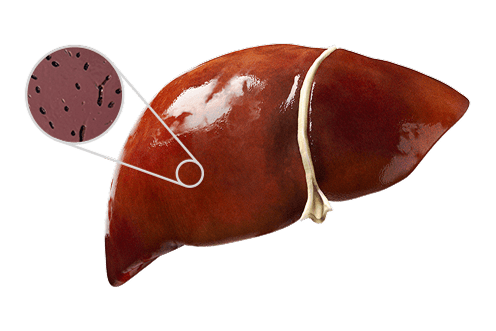
Healthy liver
A healthy liver may have a small amount of fat (less than 5% of the liver’s weight). It performs its main functions properly, which includes processing the body's food and waste.

Fatty liver
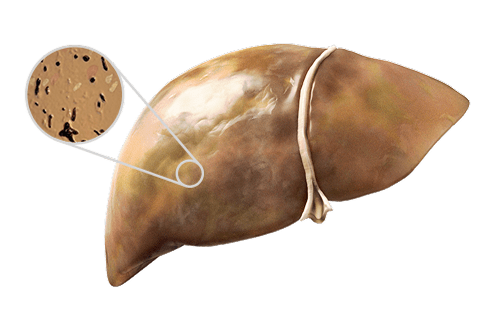
Fatty liver
The fat content in the liver has accumulated to more than 5%. This fat buildup can damage the liver if left unchecked and unmanaged.
A test at this stage can reveal if liver damage is silently worsening.

MASH
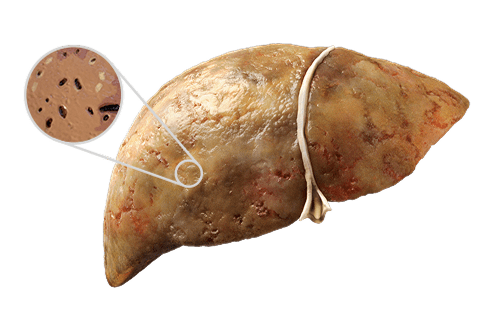
MASH
Fibrosis stage
The fat buildup in your liver has become toxic, triggering inflammation. This is damaging and could lead to scarring (also known as fibrosis). MASH without scarring is considered fibrosis stage F0.
A test for liver scarring can tell you if there is any scarring in your liver.

MASH + scarring
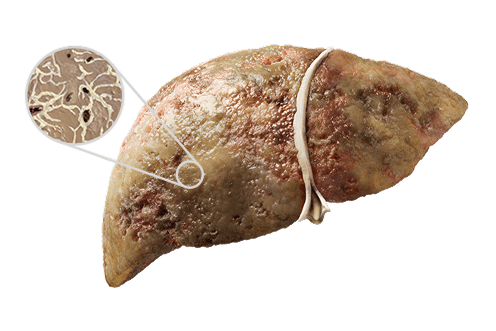
MASH + scarring
Fibrosis stage
Toxic fat buildup and chronic inflammation have led to more severe damage to the liver. MASH with scarring is a serious condition that can lead to irreversible damage. A liver with mild scarring is considered fibrosis stage F1. Moderate to advanced scarring is stages F2-F3; Rezdiffra is indicated for stages F2-F3.
F3 is the last stage before cirrhosis. It is critical to talk to your liver specialist.

Cirrhosis
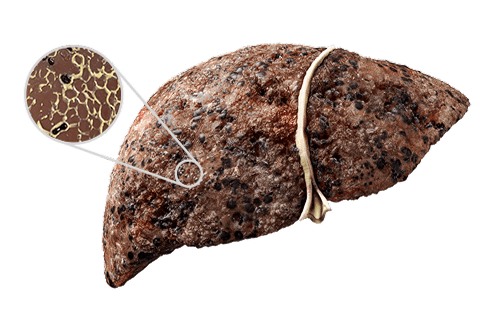
Cirrhosis
Fibrosis stage
Severe scarring has permanently and irreversibly damaged the liver. Cirrhosis may lead to liver failure, liver cancer, and reduced life expectancy. A liver with cirrhosis is considered stage F4, the most advanced stage of fibrosis.
The damage to your liver is irreversible. A liver transplant is the only definitive option to restore full liver function once the liver has decompensated.
Serious Consequences
MASH is serious and can progress to life‑threatening consequences.
Showing
of

Did you know: Latinos may be at greater risk of developing MASH?
People of Latino descent are more likely to have a genetic marker that makes them more susceptible to storing fat in their liver. It's called the PNPLA3 gene variant. This gene variant can increase the likelihood of developing MASH and for it to be more severe, so it is important to get tested for liver scarring. See tests below.
Types of tests
Ask for a test for liver scarring to understand your liver health.
Even if you've had a blood test for liver enzymes or an ultrasound, you may need other tests to measure fat buildup and scarring linked to MASH. If your test results reveal you have stage 2 or 3 liver scarring (fibrosis stage F2 or F3) without cirrhosis, ask your liver specialist if Rezdiffra is right for you.
Select each test to learn more.
Showing
of
ALT=alanine transaminase; AST=aspartate aminotransferase; ELF=enhanced liver fibrosis; FIB-4=Fibrosis-4; MRI=magnetic resonance imaging.
Ask a liver specialist about Rezdiffra and if it is right for you.
Talk to your liver specialist today.






